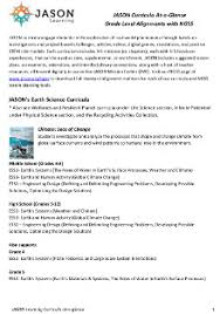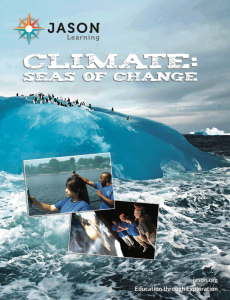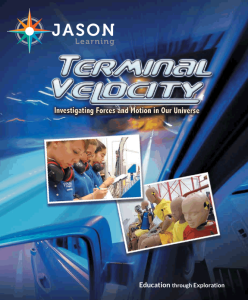Additional matrices are in development.
A digital catalog of existing curricula resource alignments to NGSS is available within JASON’s digital platform. The Task Force is also supporting the development and field-testing of exemplar lessons.
NGSS Lesson Planning Tools
In order to support the shifts in pedagogy, JASON has developed the following resources to help teachers:
NGSS Lesson Plan Template offers a way for educators to put specific NGSS lesson design requirements presented in the EQuIP rubric for science 3.0 into a written lesson plan – “on paper”. This template can be modified. Check out our digital, fillable pdf version here. Also see a sample of a completed lesson plan here for added support when using this template: Modeling the Greenhouse Effect.
Three-Dimensional Learning Reflection challenges educators to deliberately and purposefully position investigations or labs to engage students in the 3-dimensional learning process and can be used for JASON and non-JASON lessons.
Concept Resource Map helps educators determine how and with what supporting resources a single activity helps develop the ideas, concepts, and practices necessary for students to reach a performance expectation. Multiple activities, representing a continuum of learning and experiences within a storyline will be necessary to position any one student to reach any given performance expectation.
Planning Investigations – Experimental Design Template can be used by both teachers and students in planning an investigation. This “map” helps conceptualize the process of isolating variables and determining how, why and what to test while linking the investigation back to a central phenomenon and focus question.
Engineering Design Decision Matrix – A variation of the Pugh Matrix, this allows students to systematically compare competing designs or solutions, one of the key expectations of the new engineering design standards.
JASON’s Professional Development Program
Designing your NGSS units of instruction?
Or just need a little more support in understanding and practicing the NGSS shifts?
We Can Help.
JASON’s National Training Team helps educators using JASON materials to embrace the vision of NGSS and deliver experiences for students that are three-dimensional. Participating educators receive the tools and strategies they need to deliver JASON effectively and develop deeper understanding and practice around NGSS pedagogy.
JASON’s NGSS training sessions can be customized according to the level of familiarity and comfort with Next Generation Science Standards. JASON offers one-day and two-day experiences to week-long institutes, as well as on-going support. Sample sessions are described in our flyer. Some level of prior PD focused on NGSS, and familiarity with the EQuIP rubric is helpful but not required for these sessions. Contact pd@jason.org to learn more about our week-long institutes, customizing a training experience for your district, and pricing.







